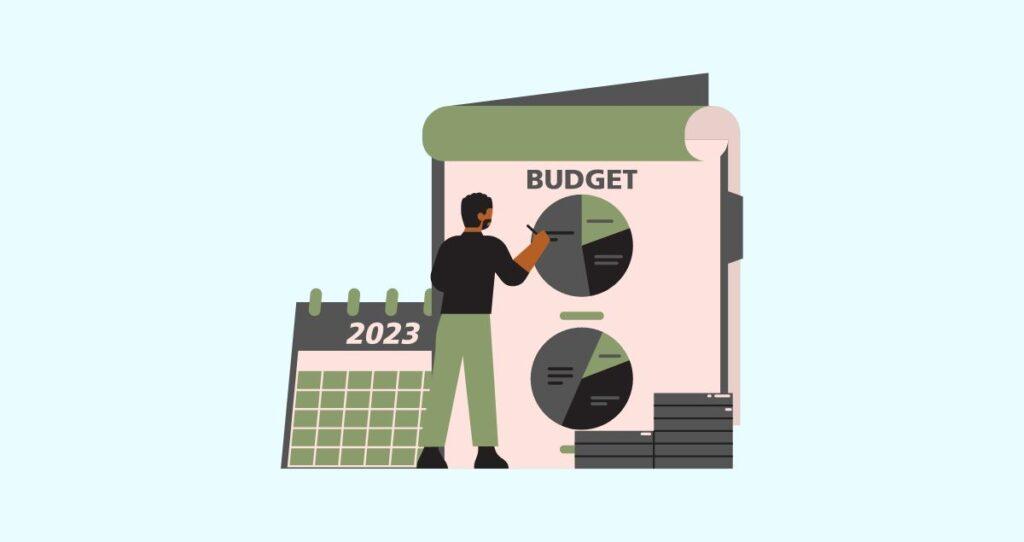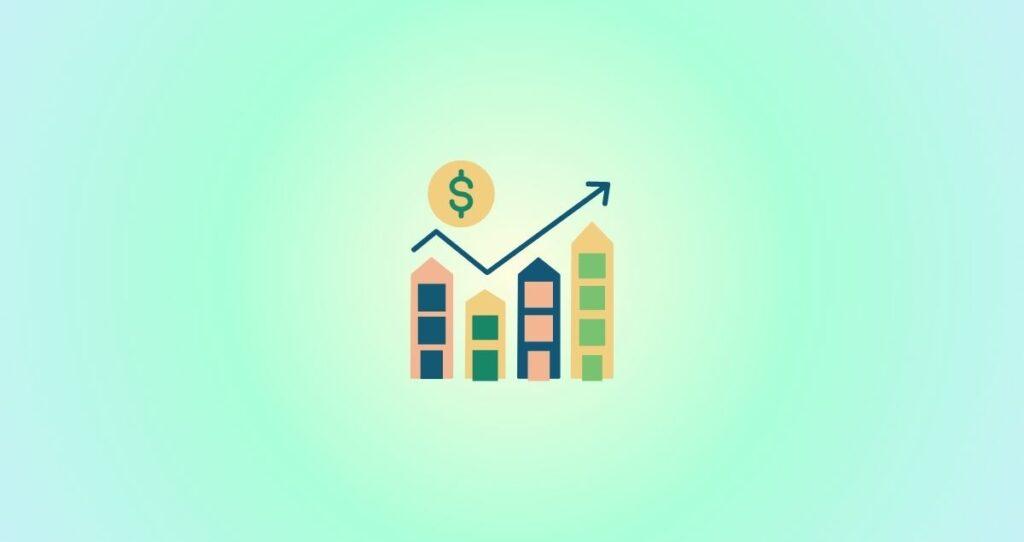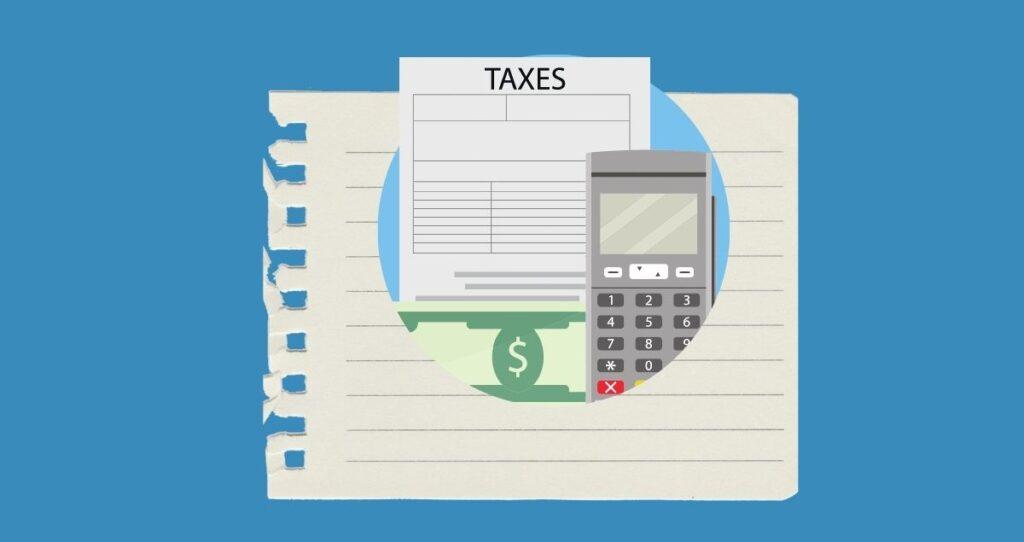Are you looking to secure financial security but are overwhelmed by the abundance of complex terminology? The world of personal finance can be intimidating, but with the right guidance, anyone can achieve their financial goals. If you are getting started with personal finance, the basic understanding of 53 key personal finance terms is a great place to start. In this article, you’ll learn 53 of the most fundamental personal finance glossary list that will help you gain a better understanding of your financial health and plan for the future.
Personal finance terms for Investing and Wealth Management
Personal finance extends beyond just budgeting and saving—investing and wealth management play a crucial role in building a strong financial foundation. Understanding these concepts is essential for anyone seeking to optimize their financial well-being. Let’s dive into the world of investing and wealth management to explore the key terms that will empower you to make informed decisions and grow your wealth.
1. Investing
Investing is the act of allocating money to an asset or venture, with the expectation of generating a return or profit over time. To navigate the intricacies of investing, it’s important to familiarize yourself with terms like stocks, bonds, Index funds, ETFs, capital gains, mutual funds, return on investment, capital, etc. Details of these personal finance terms are covered in the next few paragraphs.
2. Mutual funds
Mutual funds are investment vehicles that pool money from multiple investors to invest in a diversified portfolio of assets such as stocks and bonds. A mutual fund allows you to diversify your portfolio and offer the protection you would not get from investing in individual stocks.
When your mutual fund makes a profit, you make money through appreciation due to compounding interest and income payout as fund dividends, interest dividends, etc.
3. Index funds
Index funds are a type of mutual fund or exchange-traded fund(ETF) that aims to track the return of a specific market index. Common market indexes that index funds might track are S&P 500 index, Wishire 5000 Total Market Index, and the Russell 2000 Index.
4. Exchange Traded Fund(ETF)
Exchange Traded Funds(EFTs) are funds that track a specific index and are traded on exchanges. What makes ETFs beneficial in your investment strategies is that they offer direct diversification. ETFs invest in stocks, bonds, and other assets. By investing in ETFs, you get paid an interest in the fund.
5. Return on investment(ROI)
The whole purpose of investing your money is that you get a return on investment or ROI for short. ROI is simply the profit you make from your investment after some time. For example, if you opened a CD account 5 years ago, and have made $2,500 at maturing, your ROI will be $2,500 minus account-related expenses and fees.
6. Diversification
Diversification simply means that you invest your money in different asset classes, industries, and sectors to reduce the risk of losing your money.
Very often, investing comes with the risk of losing your principal and interest earned. You probably heard of the term, “Never put all your eggs in one basket”. To mitigate the risk of losing capital, investors choose to diversify their investments. For example, if you only put all your money in the stock market and it crashes, your portfolio will be affected more than it could have been if you spread your funds in bonds, stocks, index funds, gold, real estate, etc.
7. Real Estate Investment Trust(REIT)
A real estate investment trust or REIT for short is a company that usually owns and manages income-producing real estate assets such as rental and commercial properties. REITs allow you to own real estate without buying physical property.
8. Liquidity
Liquidy is a measure of how fast an asset or security be converted into ready-to-use cash without affecting its market value. For example, if you own a piece of land and want to sell it to raise money for your startup, it might take a long time to find a buyer. This means that your land is not liquid as it is harder to turn it into cash. The most liquid asset is cash.
9. Dividends
A dividend is a sum of money a company pays to its shareholder usually every quarter. Companies usually pay you dividends in cash, stocks, or other forms and the dividend payout comes from its profit. Before getting paid dividends, you must first invest in dividend-paying stocks.
As an investor, you can choose to reinvest your dividend or cash out your payment as a form of passive income. Dividends are a perfect way to diversify your investment and streams of income.
10. Bonds
As you search for investment alternatives, you will come across the term “Bond”. Most people are familiar with going to the bank/government to borrow money. But, did you also know that you can lend money to companies and the government and earn interest? This is done through bond investing.
In simple terms, a bond is an agreement issued by a company or a government to different investors to raise money.
By buying a bond, you give a loan to the company/government in exchange to pay you back the face value at maturity and a regular interest payment.
11. Stocks
A stock is a type of financial investment that represents ownership in a company or corporation. It signifies a claim on the part of the company’s assets and earnings. Depending on the type of shares you hold, you have the right to vote on shareholder resolutions and receive dividends, which are a portion of the company’s earnings distributed to shareholders.
Stocks are bought and sold predominantly on stock exchanges and are a key component of most investment portfolios. The two types of stocks are common stocks and preferred stocks.
Related: 14 Reasons people lose money in the stock market
12. Asset allocation
Asset allocation is a financial strategy that aims to balance risk and reward by picking a portfolio’s assets according to an individual’s goals, risk tolerance, and investment horizon. The three main asset classes are equities, fixed-income, and cash and equivalents. These asset classes behave differently over time. Hence, offering different levels of risks and returns.
Personal finance terms for Insurance
Financial stability also comes with knowing insurance products and how to use them to your advantage. For example, a health savings account allows you to save money for medical-related expenses. Additionally, you might have the option to invest some of your HSA funds and let it grow on a tax-deferred basis.
Let’s explore common personal finance terms you need to know when it comes to insurance.
In simple terms, the insurance premium is what you will pay the insurance company to keep your insurance plan active. Depending on the nature of your plan, your premium might be paid on a monthly or quarterly basis.
14. Term Life Insurance
Term life insurance is an insurance plan that provides coverage for a specified period which usually ranges from 10 to 30 years. With Term life insurance, you pay a premium each month and the company promises to pay a specific amount to your beneficiaries when you pass away.
15. Whole Life Insurance
The whole life insurance is permanent life insurance that covers you for your entire life. Whole life insurance usually comes with fixed premiums and fixed death benefits. Since the coverage is a lifetime coverage, whole life insurance premiums tend to be higher than other life insurance such as term life insurance.
16. Deductible
Your deductible is the amount you must pay toward health-related services before your insurance starts paying its shares. For instance, if your deductible is $500, your insurance might not start covering you until you have spent $500 on health care services.
17. Copayment
The copayment or copay is a portion of the bill you pay for certain medical services. For example, you might need to pay $40 in copay every time you visit a specialist and $20 when you visit a general practitioner.
18. Out-of-pocket maximum
The out-of-pocket maximum is the highest amount you will pay toward your insurance cost. This amount includes your coinsurance, deductible, and copay. According to HealthCare.gov, the maximum out-of-pocket for 2023 is $9,100 for an individual and $18,200 for a family.
19. Health Savings Account(HSA)
An HSA is a type of savings account that allows you to set aside a portion of your pretax wages to help you pay for qualified medical expenses. To qualify for an HSA, you must be enrolled in a High Deductible Health Plan(HDHP). For 2023, HSA contribution limits are $3,850 for self-coverage and $7,750 for family coverage.
Learn more about SHA: 7 benefits of Health savings account you need to know
20. High Deductible Health Plan(HDHP)
A high Deductible Health Plan(HDHP) is a health plan where you pay more out of pocket until you have reached your deductible. In exchange for higher out of pocket, your premiums will be lower and you will qualify for a Health Savings Account(HSA).
21. Coinsurance
The coinsurance is the percentage of the medical bill you pay after meeting your deductible. For example, after your deductible has been reached, your insurance plan might require that you pay 25% of your medical bill while the insurance covers the remaining 75%.
Personal finance terms for budgeting and saving
Now that we have covered the importance of insurance and risk management, let’s dive into the essential personal finance terms about budgeting and saving. These terms will equip you with the knowledge and skills necessary to effectively manage your money and achieve your financial goals.
22. Budget
A budget is a financial plan that outlines your income and expenses over a specific period. By creating and following a budget, you can gain control over your spending, make informed choices about where your money goes, and ensure that you are saving enough for the future.
Read more: How to talk to your spouse about budgeting?
23. Savings rate
Your savings rate refers to the percentage of your income that you set aside for saving and investing. It is an important indicator of your financial health and future wealth accumulation. By increasing your savings rate, you can accelerate your progress toward financial freedom and achieve your long-term goals faster. Start by putting aside at least 15% of your income toward saving.
Related: The 50-30-20 budget rule and how to apply it
24. Emergency fund
An emergency fund is a separate savings account specifically designated for unexpected expenses or emergencies. It serves as a safety net, providing you with a financial cushion when you encounter unforeseen circumstances such as medical bills, job loss, or car repairs. Building and maintaining an emergency fund is vital to protect yourself from falling into debt or derailing your financial progress.
Related: 4 ways to save for emergency fund fast
25. Compound interest
Compounding interest is a term that holds great significance in the world of personal finance and wealth building. It refers to the interest earned not only on your initial investment but also on the accumulated interest over time. By harnessing the power of compound interest, you can watch your savings grow exponentially, allowing you to achieve your financial goals more quickly.
26. Financial goals
Financial goals are the specific objectives you set for yourself to guide your saving and spending decisions. These goals can be short-term, such as saving for a vacation, or long-term, such as building a retirement nest egg. By setting clear financial goals, you can stay focused, and motivated, and make informed choices that align with your vision of a financially secure future.
27. FDIC insurance
The Federal Deposit Insurance(FDIC) insurance is an insurance offered by FDIC to banks and savings accounts from banks. The FDIC covers up to $250,000 per account and per depositor.
28. NCUA insurance
The National Credit Union Administration(NCUA) insurance insures credit unions and credit union accounts up to $250,000 per account and per depositor.
29. Certificate of deposit(CD)
Certificates of deposits or CDs for short are term deposit accounts that come with fixed interest rates. Unlike savings accounts, CD accounts come with much higher interest rates. In exchange for higher rates, the money gets locked away in the account until the maturity date. Most CDs also come with an early CD withdrawal penalty which is usually expressed as a flat rate or several months of interest on your CD account.
Learn how to open a CD account step-by-step.
30. Money Market Account(MMA)
Money market account or MMA for short is a type of savings account offered by banks and credit unions. Just like CDs, checking accounts, and savings accounts, MMAs are insured by FDIC or NCUA up to $250,000 per depositor per account. Money market accounts usually come with a higher interest rate than normal savings accounts but they also limit the number of withdrawals and deposits you can make per month.
31. Savings account
A savings account is a deposit account you open from a bank or a credit union that offers a limited number of withdrawals and transfers per month. In exchange for this limitation, the account allows you to earn a small interest rate. To maximize your return on investment, consider opening a high-yield savings account from online banks.
32. Checking Account
Just like a savings account, a checking account is a deposit account you can open from a bank or a credit union. With a checking account, you have access to your funds at any time and you can make unlimited ATM withdrawals, transfers, and deposits. The biggest drawback of checking accounts is that they do not earn you interest on your deposit.
33. Annual percentage yield(APY)
The APY represents the total amount of interest a financial product such as a savings account, certificate of deposit, or money market account earns you. The APY includes the compounding effects. The higher the APY, the more return on investment you get. So, if you are considering opening a CD, for example, look for a higher annual percentage yield.
Personal finance terms about credit and debt
Debt and credit are essential in taking control of your finances and building wealth. Unfortunately, millions of people get trapped in debt which leads to a lifetime of financial struggles. Understanding these personal finance terms will not only enrich your financial literacy but also enable you to make informed decisions that shape your financial future.
The followings are the most important debt and credit-related personal finance terms you should know.
34. Credit score
Your credit score is a numerical representation of your creditworthiness, indicating how likely you are to repay your debts. It is determined by various factors, such as your payment history, credit utilization, length of credit history, new credit accounts, and types of credit used. A high credit score opens doors to better interest rates and loan options, while a low credit score may hinder your financial prospects.
you might also like: How to Raise Your Credit Score in 30 Days?
35. Interest rates
When you borrow money, the lender charges you a percentage of the total amount as interest. The interest rate determines how much extra you’ll pay in addition to the principal. It’s crucial to compare interest rates across different financial products to find the most favorable terms that suit your needs.
36. Credit utilization ratio
Your credit utilization ratio represents the percentage of your available credit that you are currently using. To calculate it, divide your total credit card balances by your total credit limits. A lower credit utilization ratio indicates responsible credit management and can positively impact your credit score.
37. Debt-to-income ratio
Debt-to-income(DTI) ratio measures the amount of your monthly debt payments to your monthly income. It provides insight into your overall debt burden and financial stability. Lenders often consider this ratio when determining your eligibility for loans or credit cards. Keeping your debt-to-income ratio low demonstrates good financial health and increases your chances of obtaining credit.
38. Debt consolidation
If you find yourself juggling multiple debts with different interest rates and payment schedules, debt consolidation can simplify your financial life. It involves combining all your debts into a single loan or credit card with a lower interest rate. This strategy allows you to streamline your payments and potentially save money on interest.
39. Refinancing
Refinancing is the process of replacing your existing loan with another loan. That is the simplest definition of loan refinancing. Usually, the new loan comes with a lower interest rate and favorable terms.
40. Annual percentage rate(APR)
The annual percentage rate or APR for short represents the actual yearly cost of your loan or financial product. The APR includes the interest rate, fees, and related costs to your account. When comparing different financial products such as loans, credit cards, etc, it is essential to compare APRs as they show exactly how much the transaction will be costing you.
Related articles:
- How to refinance your car loan?
- An easy guide to refinancing a student loan
- How to refinance a mortgage?
41. Fixed Rate Mortgage(FRM)
A fixed-rate mortgage defines a loan where you pay the same interest rate for the entire duration of the loan. For example, if you have a 3% FRM on a 30-year mortgage, the interest will remain at 3% until the loan is paid off no matter the changes in market rates. A fixed-rate mortgage helps you know exactly how much your monthly payments will be ahead of time which is essential in financial planning.
42. Adjustable Rate Mortgage(ARM)
Unlike FRM where the interest rate stays the same for the duration of the loan, the interest rate on adjustable-rate mortgages/loans changes over time. For example, if you purchased a house with an ARM and rates went higher, the interest rate you pay will be adjusted to reflect these changes. While you might start with a low ARM, your interest rate could spike if rates surge due to higher inflation rates for example.
43. Amortization
Amortization is the process of paying off your loan in equal installments. Every payment you make is usually divided into the principal and interest. With this process, the percentage that goes toward the principal starts small and increases over time.
44. Private Mortgage Insurance(PMI)
Private mortgage insurance or PMI is a type of insurance you might be required to purchase if you don’t have the required down payment for the loan. For example, if you are buying a house without a 20% down payment on a conventional mortgage and you do not qualify for the first homebuyer program, your lender might require you to purchase a PMI. The PMI will protect the lender in case you default on your loan.
Related posts:
- How to qualify for the first-time home buyer program?
- How to save for a down payment?
- What is The Best Loan For Buying A House?
- How to get approved for a mortgage?
Personal finance terms regarding tax
Believe it or not, tax is a major factor that will affect your ability to build wealth and how fast you will get there. Rich people are rich because they legally pay less tax by reducing their realized incomes. To take control of your finances, master the basis of taxation, and minimize your tax liability as much as possible.
The following are personal finance terms about taxes and deductions you should know.
45. Tax credits
Unlike deductions, which reduce your taxable income, tax credits directly reduce the amount of tax you owe. This means that if you qualify for a tax credit, you could potentially pay less in taxes or even receive a refund. Common tax credits include the Child Tax Credit, the Earned Income Tax Credit, and the American Opportunity Credit for education-related expenses.
46. Tax bracket
This refers to the range of income levels that are subject to a particular tax rate. Understanding your tax bracket is crucial for effective tax planning, as it helps you determine how much of your income will be taxed at each rate. By knowing your tax bracket, you can identify strategies to potentially reduce your tax burden, such as contributing to retirement accounts or taking advantage of tax-advantaged investment options.
47. Standard Deduction
When you are taxed a specific amount of income it is known as a standard deduction. Your income tax depends on your filing status and tax bracket.
48. Itemized deduction
Itemized deductions allow you to subtract every eligible expense from your taxable income. When you itemize your deduction, you list out and claim each eligible deduction separately. Some of the expenses you can include in your itemized deduction include but are not limited to property tax, mortgage insurance, qualified charitable donations, etc.
Personal finance terms for retirement planning
Retirement planning is an essential aspect of personal finance that requires careful consideration and strategic decision-making. As you prepare for your golden years, it’s important to familiarize yourself with key terms and concepts related to retirement planning.
49. 401(k) plan
A 401(k) plan is a type of retirement savings account that is offered by many employers. This plan allows employees to contribute a portion of their salaries, which is then invested in a variety of funds. Your contributions grow tax-deferred until you are taking distributions, usually during retirement.
It’s important to take advantage of a 401(k) plan if your employer offers it, as it can provide significant tax advantages and help you build a substantial nest egg for your retirement years. Additionally, your employer might match your contribution up to a certain percentage which is extra free money.
50. Individual retirement account(IRA)
Individual Retirement Account(IRA) is a retirement savings account that individuals can open on their own. There are two main types of IRAs: traditional and Roth. With a traditional IRA, you can contribute pre-tax dollars, which grow tax-deferred until withdrawal in retirement. With a Roth IRA, you contribute after-tax dollars, and qualified withdrawals are tax-free. Understanding the differences between these two types of IRAs is essential in determining which one is most suitable for your retirement goals.
51. Social Security
Social Security is a federal program that provides income to eligible individuals and their dependents during retirement. The amount of Social Security benefits you receive is based on factors such as your earnings history and the age at which you choose to start receiving benefits.
52. Annuity
An annuity is a financial product offered by insurance companies that provides a stream of income over a specified period or for the rest of your life. Annuities can be a valuable tool for ensuring a steady income during retirement, but they can also be complex and come with various fees.
53. Finance Independence Retire Early(FIRE)
Last but not least is the FIRE term. If you are an early retirement enthusiast, you have already heard of the FIRE movement. FIRE simply stands for Financial Independence Retire Early.
People who practice the FIRE movement rules, usually save up to 70% of their incomes and try to live off income from their investments. Early retirement means different things from one person to another.
However, you are considered”FIRE” when you can live off the income from your investments. At this point, you are financially free, and working is only optional. Meaning, you can retire early if you choose to do so.
Your FIRE number is the amount of money you need to save before you can retire. To calculate your fire multiply your annual expenses by 25. For example, if your annual expenses are $6,000, your FIRE number will be $1.8 million. Once you have reached this number, you will be able to retire since the income from your savings will easily be able to cover your expenses.









